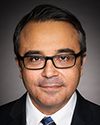I can answer some parts of the question, and then I'll give the floor to Dr. Wong to see if he has anything to add. Perhaps Mr. Obed might even have information to give with respect to Nunavik.
As you know, the Nunavik regional authority is part of the provincial system. We don't directly fund the health services of the regional authority, which is integrated into the Quebec system. However, the people in the authority do share information with us when necessary. Of course, if they need additional supplies or equipment, they can ask us. In fact, they have submitted a request to us for personal protective equipment. We were able to send them some based on the inventory we have in the department.
When the province of Quebec saw a significant increase in COVID-19 cases, they were concerned about not receiving equipment quickly. They made a request to us, and we were able to meet their needs. The reason I put this in context is that we aren't as integrated into their day-to-day operations as they are, because they are part of the provincial system.
I can tell you, however, that they have asked for the Rangers to be sent, mainly to help them with infrastructure logistics. That goes back to your point about the additional infrastructure needs. Often, the infrastructure exists, but it has to be adapted for different purposes. Facilities need to be disinfected, and it's necessary to ensure that the required supplies, furnishings and equipment are in place so that they can be used for other purposes, such as isolating community members or housing individuals delivering services who are mobilized to provide the additional capacity required to respond to the pandemic.
We are playing a more direct role in first nations communities. We have purchased many temporary structures that can be deployed quickly in the communities. Already 78 different infrastructures are being set up or are ready to be used in the communities to meet these additional needs, especially in small or more isolated communities.
With respect to critical care capacity, it is obviously related to the capacity of the hospital environment across the country. Only two hospitals in Manitoba are under the responsibility of our department, so we're working more closely with them.
We are working with provincial governments to ensure that they have plans to increase critical care capacity and that they can receive first nations patients living in isolated communities. We are working very closely with them to make sure they have plans to evacuate community members early enough, before they get very sick. We can't wait until they are in critical condition. They need to be close to the hospital environment or in the hospital environment as soon as they have complications related to COVID-19.
That's a partial answer.
Dr. Wong, do you have any additional information to provide with respect to Nunavik?





